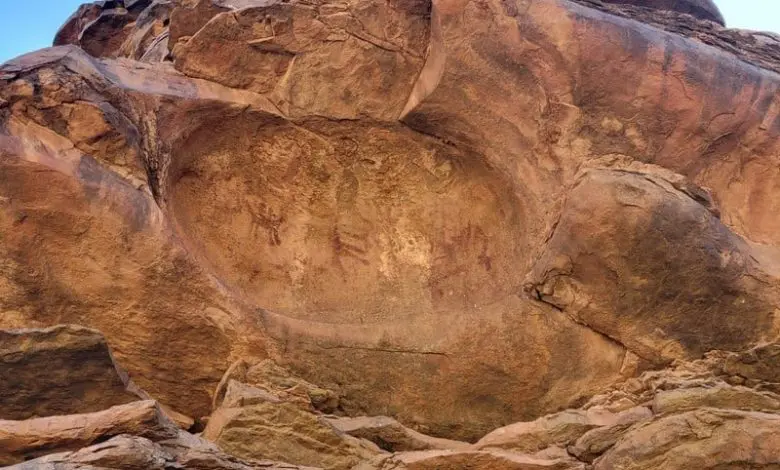A team of researchers from Ibn Zohr University in Agadir has unveiled a groundbreaking archaeological discovery in Morocco’s southern desert, according to converging media reports this week.
They documented the first scientifically recognized site of painted rock art in the region, attributed to the Libyco-Berber era during the prehistorical settlement period.
The team described the findings as a transformative step in understanding the rich archaeological heritage of southern Morocco.
The discovery, located in the Assa-Zag province, showcases a series of painted motifs created using natural pigments on the walls of remote rock shelters. The artworks, preserved across millennia, shed light on the cultural and social practices of early human groups in the area.
The team believes the paintings mark a significant addition to the sparse material remnants of the region’s prehistoric inhabitants.
“This is a landmark archaeological event,” the research team stated. “It offers unprecedented insights into the human story of the desert and the pivotal role this region played in ancient civilization.”
The findings also include pre-Islamic burial sites near the painted shelters. The burial grounds feature varied grave types, including crescent-shaped tombs extending over 200 meters, highlighting the historical importance of the area.
The site is the first of its kind in Assa-Zag and only the fifth rock art location of this type documented in the Moroccan desert. Previously, researchers had uncovered similar sites in the regions of Tan-Tan and Smara.
The research team highlighted the broader implications of their discovery. “These painted rock art pieces deepen our understanding of how ancient societies expressed themselves artistically and interacted with their environment,” they noted.


